Maybe you already have one or the other cannon flower in your apartment without you even knowing it. The genus is very rich in species and forms and also includes many house plants that are popular with us.
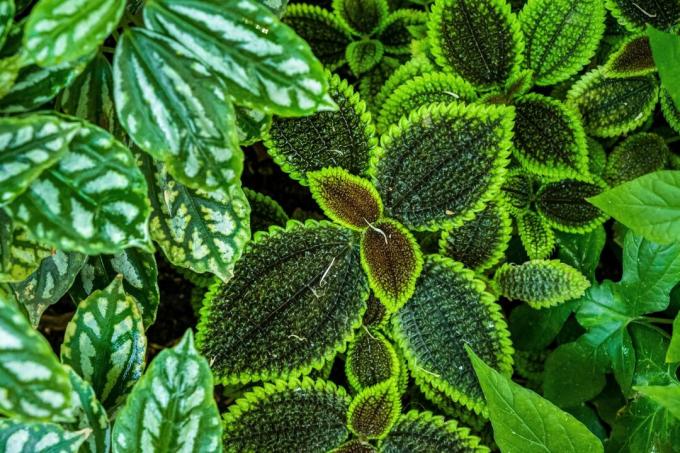
In some species of cannon flowers (pilea) you would not think at first glance that they are so closely related. Location and care requirements are not identical for all varieties. However, this article gives rough guide values with which most pileaspecies are satisfied.
contents
- Gunner flower: origin and properties
- The most beautiful types and varieties of cannon flowers
- Plant gun flower
- Proper care of the gunner's flower
- propagation
- Are gunnery flowers poisonous?
Gunner flower: origin and properties
By the gunner flowers (pilea) is a particularly species-rich genus in the nettle family (Urticaceae). The up to 400 different species are mainly distributed in tropical and subtropical regions of the world, some of them also occur in temperate latitudes. There are also representatives of the genus that can be kept as indoor plants. This is also what this article will be about.
Gunner flowers are usually herbaceous plants or subshrubs with simple leaves. The houseplant species generally reach heights of 10 to 30 cm. The inflorescences consist of many small, rather inconspicuous individual flowers. By suddenly relaxing, the stamens throw the pollen out of the perianth in nature, which is why the cannon flowers are also called centrifugal flowers or artillery flowers. Although they belong to the stinging nettle family, cannon flowers have no stinging hairs. Externally, however, some species are quite similar to those we know Big nettle (Urtica dioica).

Tip: Because gunnery flowers love high humidity and are non-toxic, they make an excellent addition to a terrarium.
The most beautiful types and varieties of cannon flowers
Of the approximately 400 different ones pileaspecies are only available as indoor plants from us. A selection of the most popular types and varieties of Kanonier Blumen gives an insight into the variety of forms of this plant genus.
- creeping gunner flower (Pilea depressa): With its long, creeping shoots, the Pilea depressa particularly suitable for traffic light pots. Their leaves are rounded, small and thick. The Creeping Gunner's Flower should be sprayed with water from time to time, as it needs increased humidity.
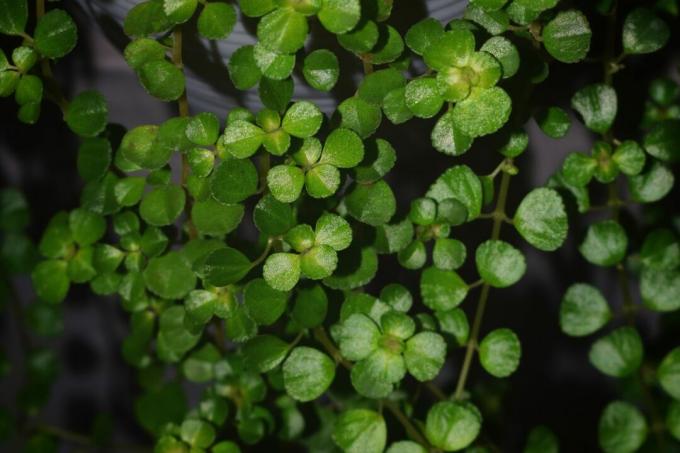
-
Silver-Blue Gunner Flower (Pilea glauca): how Pilea depressa forms too Pilea glauca long shoots with many small, green leaves.
- Pilea glauca ‘Silver Sparkle’: In this variety, the leaves are covered with a silvery sheen.

-
Shrouded Gunner Flower (Pilea involucrata): With its large, toothed leaves, this species is more reminiscent of a stinging nettle. They are highly structured on the upper side. The leaves are green on top but tinged red on the underside. Pilea involucrata In contrast to most other species, it needs temperatures of at least 18 °C all year round. It should be sprayed with water regularly.
- Pilea involucrata ‘Moon Valley’: Here the leaves are also rust-red or brownish on the upper side in the middle.
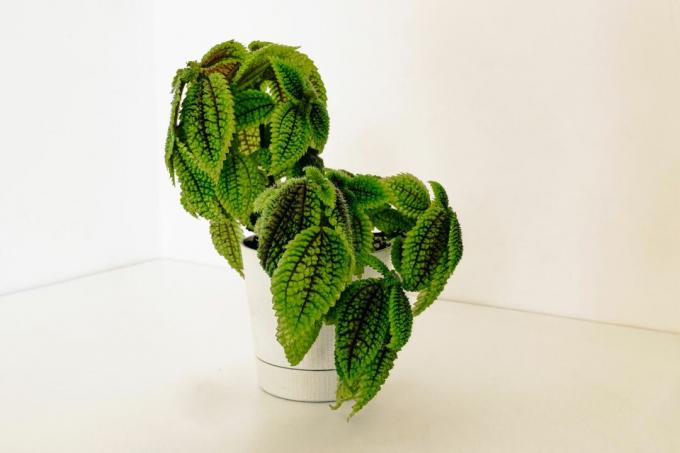
- Vietnamese gunner flower (Pilea caderei): The Vietnamese Gunner's Flower has large leaves with a green and silver pattern on the upper side. It can grow to over 40 cm.
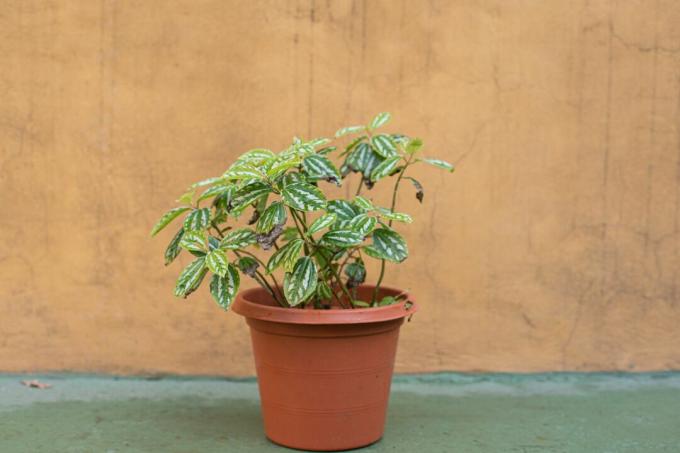
-
Pilea spruceana: This slightly woody gunner's flower also has large leaves that are slightly notched at the edge and are heavily textured on the surface.
- Pilea spruceana ‘Silver Tree’: The leaves of the 'Silver Tree' cultivar are very dark green with a silver stripe on the median vein.
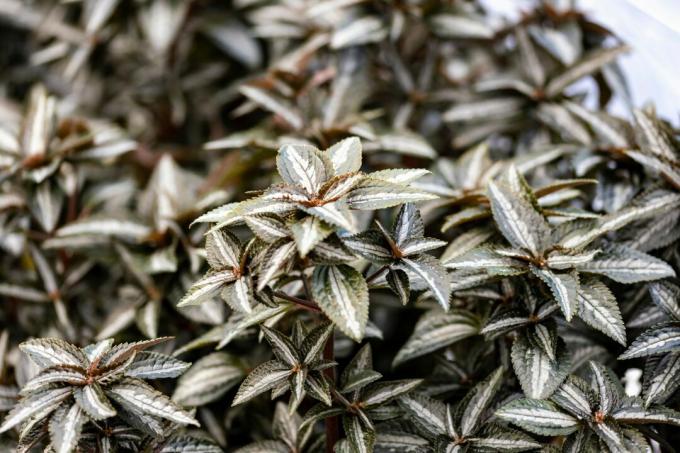
- Chinese money tree (Pilea peperomioides): One of the best known pileaspecies is the Chinese money tree, also known as the UFO plant. It has glossy green, large, rounded, and fleshy leaves that sit on long stalks. It can stand a little cooler than other species at 15 - 18 °C. The humidity should also be slightly increased for the UFO plant.

Plant gun flower
With the numerous types and varieties of Kanonierblumen, it is impossible to get everyone under one roof when it comes to planting and caring for them. Nonetheless, we give a few pointers that are common to most houseplantpilea are appropriate.
Gunner flowers from the tropics and subtropics like bright locations. Some species like to be particularly bright, others can do with less light. However, direct sunlight or dark shady places should be avoided for all species. An east or west window is usually well suited. The right temperature for most variants is 18 to 23 °C. Here, too, it may be warmer or a little cooler for some species. The substrate should be permeable, slightly acidic soil such as ours Plantura organic universal soil be used. The compost content as well as the slightly acidic pH value offer the cannon flowers good conditions for growth. For optimal permeability, about 30% sand should be added. It is best to create a drainage layer in the pot, as waterlogging is not tolerated by cannon flowers.

Proper care of the gunner's flower
Cannoneer flowers are fairly uncomplicated to care for and can survive one or the other blunder.
In general, cannon flowers have a moderate water requirement, which means that the soil is allowed to dry out between waterings. Check with your finger that the top 2 cm of the substrate is dry. In this case it should be watered again, preferably with room-warm, soft water. Irrigation water that has not been absorbed by the substrate after 15 minutes and collects in the saucer must be removed.
In the growing season from spring to autumn, the cannon flower should be supplied with nutrients. A liquid fertilizer such as ours is ideal for indoor plants Plantura organic indoor & green plant fertilizer at. It was specially composed for the needs of ornamental foliage plants and is easy to dose and use. A fertilizer application every three weeks is sufficient for cannon flowers.
Gunflower species that develop long shoots can be cut back in spring. Clean, sharp tools are used for this. About two thirds of the shoot length may be shortened.
In winter, most species should be kept at around 15°C. They then need a little less water between autumn and spring, only two to three nutrient doses.
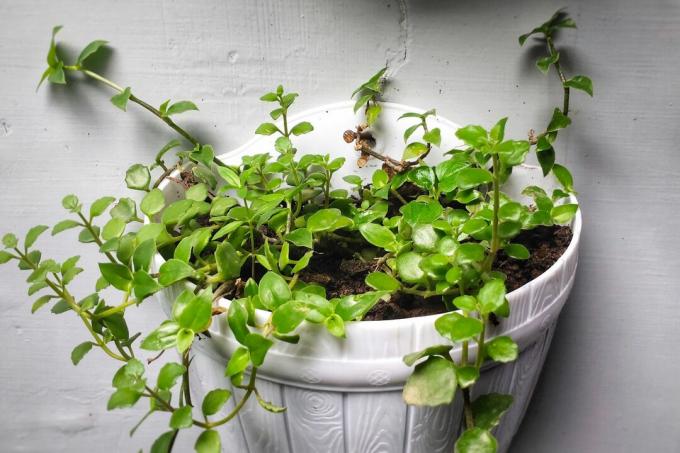
propagation
The best way to propagate gunnery flowers is by taking cuttings in spring. Depending on the species, this can be a head cutting, or you can cut creeping species like this Pilea depressa, a whole shoot into small pieces. Head cuttings are cut off the top of the plant and defoliated at the bottom. The shoot cuttings are placed horizontally on a growth substrate, the head cuttings are inserted with the cut surface downwards. Both are lightly pressed. A suitable soil is ours, for example Plantura Organic Herb & Seed Soil from natural raw materials and without peat. Due to the low content of nutrients in our soil, root growth is stimulated and resistant plants develop. Now the earth is slightly moistened, covered with a transparent plastic bag and placed in a bright and warm place at around 20 °C.
Sometimes offshoots are also formed. For example, in the case of the Ufo plant, small miniature versions of the mother plant grow out of the ground. These can be carefully separated when repotting and planted in separate pots.

Are gunnery flowers poisonous?
There is no general answer for the entire genus as to whether cannoneer flowers are poisonous. Some styles like that Pilea peperomioides are non-toxic to humans and pets. Others, such as Pilea caderei, are toxic and should not be consumed by humans or pets. To be on the safe side, find out about the toxicity of each pilea-Art.
The is also easy to care for and decorative purple mare (syngonium). With us you will learn how to plant and care for the ornamental leaf plant with the long creepers.



